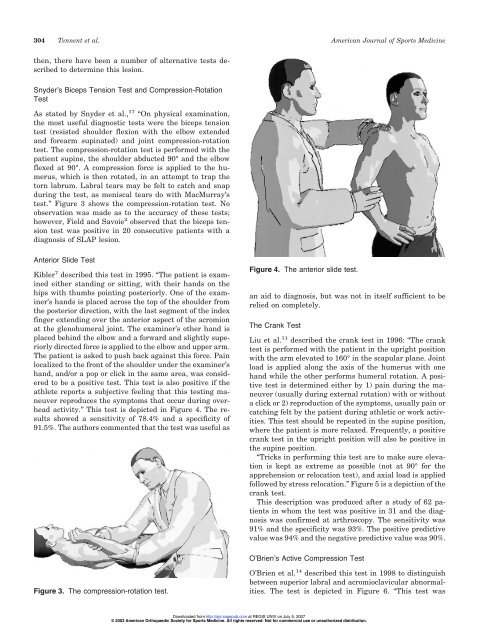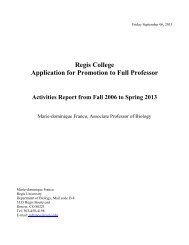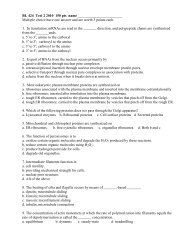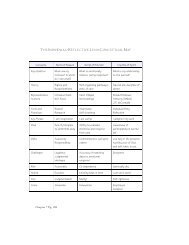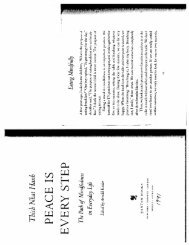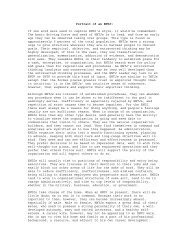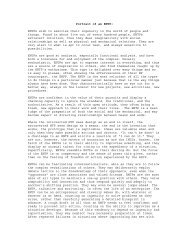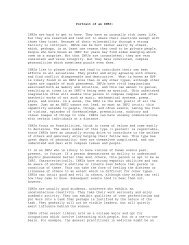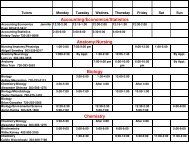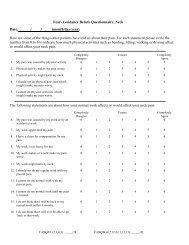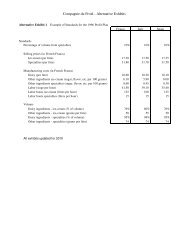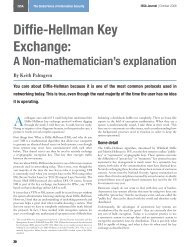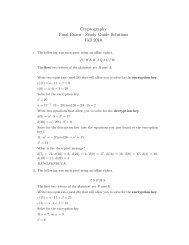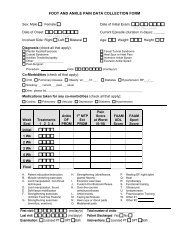Medicine American Journal of Sports
Medicine American Journal of Sports
Medicine American Journal of Sports
You also want an ePaper? Increase the reach of your titles
YUMPU automatically turns print PDFs into web optimized ePapers that Google loves.
304 Tennent et al. <strong>American</strong> <strong>Journal</strong> <strong>of</strong> <strong>Sports</strong> <strong>Medicine</strong><br />
then, there have been a number <strong>of</strong> alternative tests described<br />
to determine this lesion.<br />
Snyder’s Biceps Tension Test and Compression-Rotation<br />
Test<br />
As stated by Snyder et al., 17 “On physical examination,<br />
the most useful diagnostic tests were the biceps tension<br />
test (resisted shoulder flexion with the elbow extended<br />
and forearm supinated) and joint compression-rotation<br />
test. The compression-rotation test is performed with the<br />
patient supine, the shoulder abducted 90° and the elbow<br />
flexed at 90°. A compression force is applied to the humerus,<br />
which is then rotated, in an attempt to trap the<br />
torn labrum. Labral tears may be felt to catch and snap<br />
during the test, as meniscal tears do with MacMurray’s<br />
test.” Figure 3 shows the compression-rotation test. No<br />
observation was made as to the accuracy <strong>of</strong> these tests;<br />
however, Field and Savoie 2 observed that the biceps tension<br />
test was positive in 20 consecutive patients with a<br />
diagnosis <strong>of</strong> SLAP lesion.<br />
Anterior Slide Test<br />
Kibler 7 described this test in 1995. “The patient is examined<br />
either standing or sitting, with their hands on the<br />
hips with thumbs pointing posteriorly. One <strong>of</strong> the examiner’s<br />
hands is placed across the top <strong>of</strong> the shoulder from<br />
the posterior direction, with the last segment <strong>of</strong> the index<br />
finger extending over the anterior aspect <strong>of</strong> the acromion<br />
at the glenohumeral joint. The examiner’s other hand is<br />
placed behind the elbow and a forward and slightly superiorly<br />
directed force is applied to the elbow and upper arm.<br />
The patient is asked to push back against this force. Pain<br />
localized to the front <strong>of</strong> the shoulder under the examiner’s<br />
hand, and/or a pop or click in the same area, was considered<br />
to be a positive test. This test is also positive if the<br />
athlete reports a subjective feeling that this testing maneuver<br />
reproduces the symptoms that occur during overhead<br />
activity.” This test is depicted in Figure 4. The results<br />
showed a sensitivity <strong>of</strong> 78.4% and a specificity <strong>of</strong><br />
91.5%. The authors commented that the test was useful as<br />
Figure 3. The compression-rotation test.<br />
Figure 4. The anterior slide test.<br />
an aid to diagnosis, but was not in itself sufficient to be<br />
relied on completely.<br />
The Crank Test<br />
Liu et al. 11 described the crank test in 1996: “The crank<br />
test is performed with the patient in the upright position<br />
with the arm elevated to 160° in the scapular plane. Joint<br />
load is applied along the axis <strong>of</strong> the humerus with one<br />
hand while the other performs humeral rotation. A positive<br />
test is determined either by 1) pain during the maneuver<br />
(usually during external rotation) with or without<br />
a click or 2) reproduction <strong>of</strong> the symptoms, usually pain or<br />
catching felt by the patient during athletic or work activities.<br />
This test should be repeated in the supine position,<br />
where the patient is more relaxed. Frequently, a positive<br />
crank test in the upright position will also be positive in<br />
the supine position.<br />
“Tricks in performing this test are to make sure elevation<br />
is kept as extreme as possible (not at 90° for the<br />
apprehension or relocation test), and axial load is applied<br />
followed by stress relocation.” Figure 5 is a depiction <strong>of</strong> the<br />
crank test.<br />
This description was produced after a study <strong>of</strong> 62 patients<br />
in whom the test was positive in 31 and the diagnosis<br />
was confirmed at arthroscopy. The sensitivity was<br />
91% and the specificity was 93%. The positive predictive<br />
value was 94% and the negative predictive value was 90%.<br />
O’Brien’s Active Compression Test<br />
O’Brien et al. 14 described this test in 1998 to distinguish<br />
between superior labral and acromioclavicular abnormalities.<br />
The test is depicted in Figure 6. “This test was<br />
Downloaded from<br />
http://ajs.sagepub.com at REGIS UNIV on July 5, 2007<br />
© 2003 <strong>American</strong> Orthopaedic Society for <strong>Sports</strong> <strong>Medicine</strong>. All rights reserved. Not for commercial use or unauthorized distribution.


